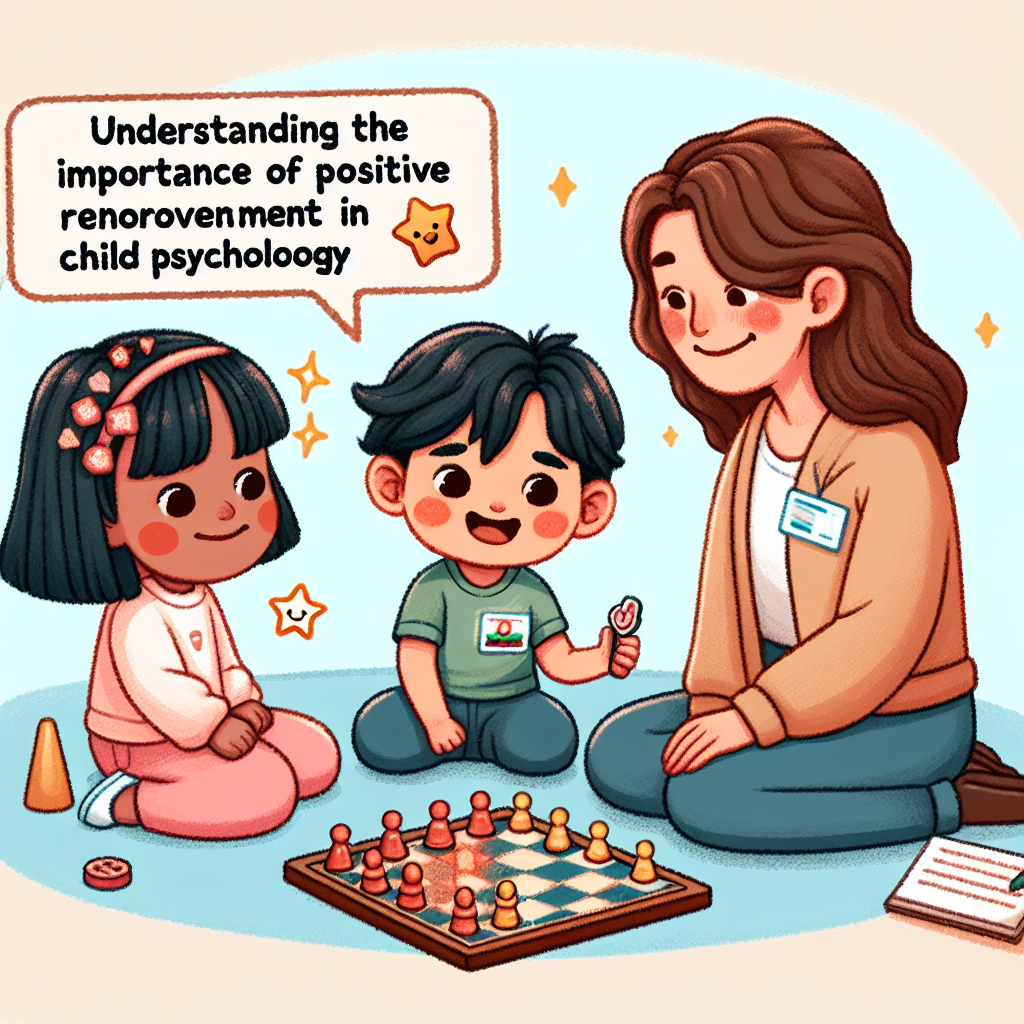Positive reinforcement is a key concept in child Psychology that focuses on providing rewards and encouragement to children for exhibiting desirable behaviors. This approach has been widely used by parents, teachers, and therapists to shape children’s behavior and promote positive emotional and mental development. Understanding the importance of positive reinforcement in child psychology can help parents and caregivers effectively nurture their children’s growth and development.
Positive reinforcement involves the use of rewards, praise, and encouragement to increase the likelihood of a desired behavior being repeated. When a child receives positive feedback for displaying positive behaviors, they are more likely to continue displaying those behaviors in the future. This process helps children develop a sense of accomplishment, self-esteem, and motivation to excel in various areas of their lives.
One of the key benefits of positive reinforcement is that it helps children learn and internalize positive behaviors. By providing specific and immediate feedback when a child exhibits a desirable behavior, parents and caregivers can reinforce the message that the behavior is valued and appreciated. This helps children understand what is expected of them and motivates them to continue behaving in a positive manner.
Positive reinforcement also helps improve self-confidence and self-esteem in children. When children receive praise and recognition for their efforts and achievements, they feel a sense of pride and accomplishment. This positive feedback boosts their self-confidence and encourages them to take on new challenges and strive for excellence in different areas of their lives.
Moreover, positive reinforcement helps strengthen the parent-child or caregiver-child relationship. When parents and caregivers provide positive reinforcement consistently, children develop a trusting and secure attachment to their caregivers. This bond fosters emotional well-being and promotes healthy communication and interaction between children and their caregivers.
Another important aspect of positive reinforcement in child psychology is its role in shaping and molding children’s behavior. By using positive reinforcement techniques, parents and caregivers can help children learn appropriate social skills, emotional regulation, and problem-solving strategies. This not only helps children navigate challenges and obstacles effectively but also equips them with the necessary tools to succeed in various social and academic settings.
In addition to promoting positive behavior and emotional development, positive reinforcement can also help address challenging behaviors in children. By focusing on rewarding positive behaviors rather than punishing negative behaviors, parents and caregivers can encourage children to adopt more adaptive and constructive ways of responding to difficult situations. This approach helps children learn how to manage their emotions, make better choices, and develop effective coping strategies.
FAQs:
Q: How can parents effectively implement positive reinforcement techniques with their children?
A: Parents can effectively implement positive reinforcement techniques by being specific, consistent, and sincere in their praise and rewards. It is important to identify and acknowledge the desired behavior, provide immediate feedback, and use meaningful rewards that are relevant to the child’s interests and preferences.
Q: What are some common mistakes that parents make when using positive reinforcement?
A: Some common mistakes that parents make when using positive reinforcement include being inconsistent with praise and rewards, using vague or unclear feedback, and over-relying on material rewards. It is important for parents to focus on genuine and specific feedback, tailor rewards to the child’s needs, and maintain consistency in their approach.
Q: Can positive reinforcement be used to address challenging behaviors in children?
A: Yes, positive reinforcement can be used to address challenging behaviors in children by focusing on rewarding alternative behaviors, providing constructive feedback, and setting clear expectations. By reinforcing positive behaviors and offering support and guidance, parents and caregivers can help children learn more adaptive ways of responding to challenging situations.
Q: How can educators incorporate positive reinforcement into the classroom setting?
A: Educators can incorporate positive reinforcement into the classroom setting by praising and rewarding students for academic achievements, good behavior, and effort. By creating a positive and supportive learning environment, educators can motivate students to actively engage in learning, develop a growth mindset, and build self-confidence and resilience.
In conclusion, understanding the importance of positive reinforcement in child psychology is crucial for promoting children’s emotional, social, and cognitive development. By using positive reinforcement techniques effectively, parents, teachers, and therapists can help children learn valuable skills, develop self-esteem and resilience, and foster healthy relationships. Positive reinforcement not only reinforces positive behaviors but also empowers children to navigate challenges and succeed in various aspects of their lives.




Leave A Comment